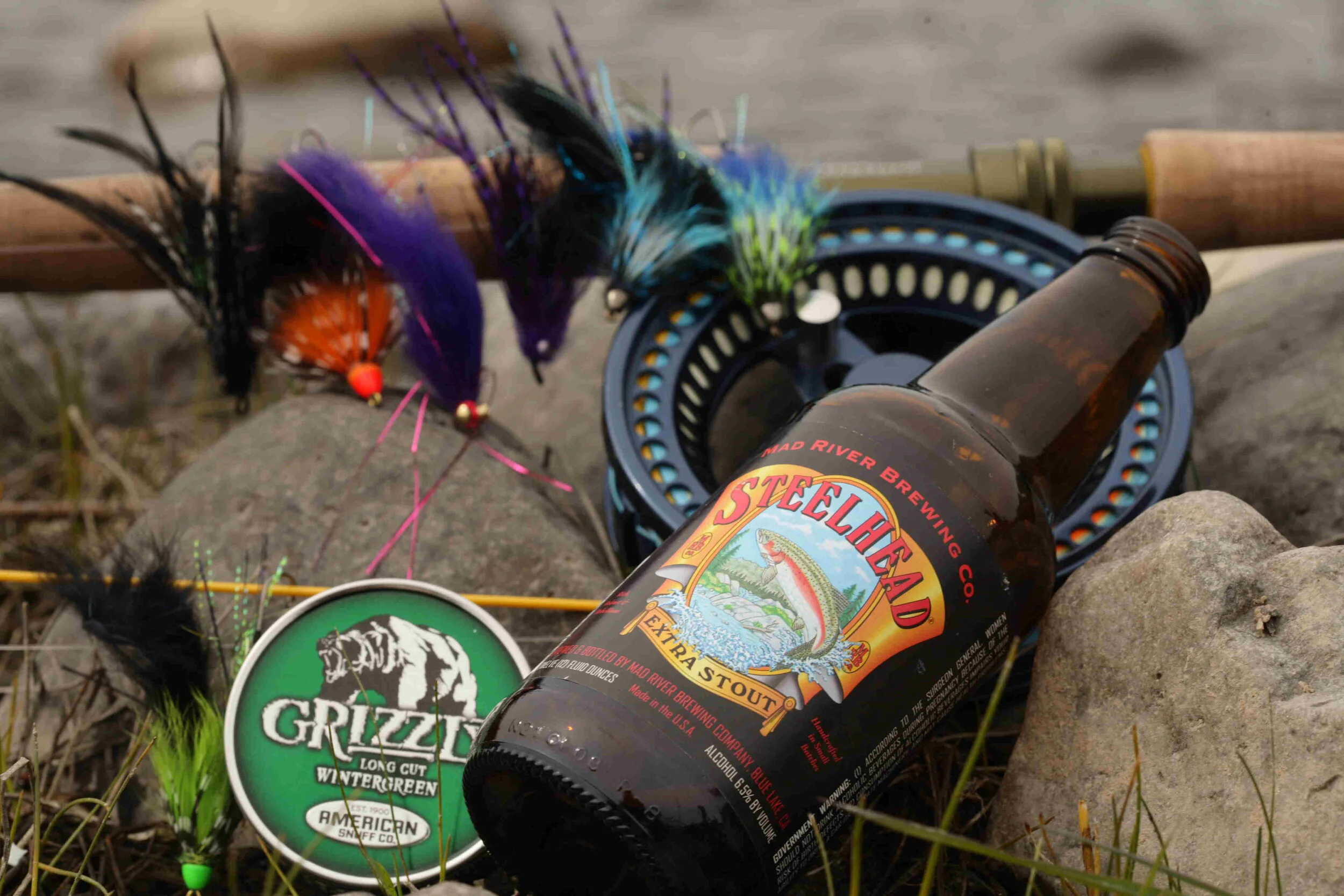
What to Bring.
Tackle.
The fishing on the Clearwater starts in early August when the summer ”run-off” flood is about to end. From around mid-September the dam starts regulating the flows and the water level stabilizes for the rest of the season. That's also when the temperatures drop and the larger B-runs moves into the river. Most fishing today is carried out with modern double hand rods between 12 ½ and 16 feet for line 8 -10.
Reel.
Please remember to bring one or two reliable reels, that won’t break down. Reel for double-handled rods should contain a minimum of 200 meters backing – Single handed reel minimum 150 meters backing. Bring both floating intermediate and sink-tip lines – sometimes a faster sinking tip can be recommendable – not that you will need more than a floater most of the season – and the Clearwater has the reputation of a little wind in the afternoons on warm days. But also sudden water or temperature changes, it would give you an extra edge! Bringing a couple of extra lines won't make a great deal, compared to the advantage it can bring you.
Leaders.
In normal conditions, the leaders would be tapered nylon, but sinking types should be in any steelheaders leader-wallet. August is warm and sunny, but the river is high and coldish due to the snowmelt from the mountains. A good number of A-runs (4-8 lbs) inhabit the lower part of the river, escaping the warmer water in the Snake River. These fish are ”very” active, and more willing to chase flies, because of the higher and slightly more colored water. You'll often find these fish on spots you'll be walking dry footed just a month later. A spectacular time to fish for steelhead, when sunblock is more needed than a woolen hat. Floating lines or an intermediate tip, or just add a sinking leader to your floating line if you feel the need.
Seasons.
As September moves into October the river will stabilize, and the risk of a flood is minimal. Temperatures will start to drop, but still, floaters or intermediate tips are recommended. The weather around Clearwater is warm and sunny, so changing into a faster sinking tip during the midday sun and early afternoon can be what makes a good day great. Steelhead is spooky fish and will stick to the bottom if it's too bright.
Dry fly fishing for steelhead is probably the most amazing sport, not to mention challenging, but it is definitely worth a go, so remember some wakers or bombers. Especially when the October Caddis is hatching the steelhead can go crazy over a skated rust/brown bomber in size 6 or 8.
Late November can be colder, but rarely below the freezing point. Then the need for a sink-tip line occurs, still on warmer days, an intermediate tip line would do the job just fine. We start using the upper section of the river, where the river is shallow and the flows are about half of the lower part, below the confluence of the north and the middle fork of the Clearwater. This part of the river is a spectacular experience, floating through a scenic area and fishing intimate runs often covered by single or light double-handed rods. Truly an experience where you believe in a fish in every single cast.
Lists of inspiration.
Flies.
Despite tube flies are getting more and more popular in this part of the world, single hook flies are still the common weapon. Even traditional ”Spey-flies” wing single strip feather wings will be a great steelhead iron.But it can't be said often enough, keep it reasonably simple and one fly you simply cannot go without, would be the famous ”Green Butt Skunk” but temple-dog style tube flies with a white wing would also do the job.
Other ”hot” patterns you shouldn't go without:
Spey flies: Lady Caroline – Grey Heron – Akroyd
Traditional: Green Butt Skunk – Purple Butt Skunk – Black/Blue Zonker - Dries/wakers Tubes.
We recommend sizes from 2 – 4 but sometimes flies as small as size 10 will be the weapon amongst the guides. Look into our photo gallery of flies for further inspiration. Learn More
Clothes.
Fleece trousers and jacket
Warm socks
Fleece gloves (only late October November)
Hat and scarf
Waterproof fishing jacket
Waders (breathable)
Boots with felt soles or cleats
Shirts and vest
Accessories.
Measure tape
Leader material
Clippers
Repair kit for Waders
Some sinking tip for extreme situations
Pliers
Wading stick
Pocket torch with fresh batteries
Camera and video (recharge in the camp / 11oV)
Remember converter for US plugs
Bag or backpack for daily equipment (waterproof if possible)
Mosquito repellent
Sunglasses
It is also advisable to bring:
A couple of plastic bags for wet clothes and booths when leaving
Personal medicine and painkillers
Cash in USD for bar, gratuities, etc.






